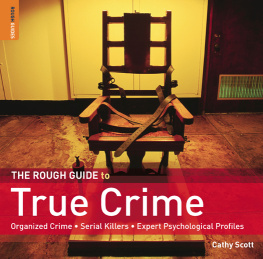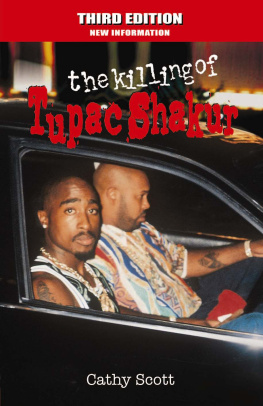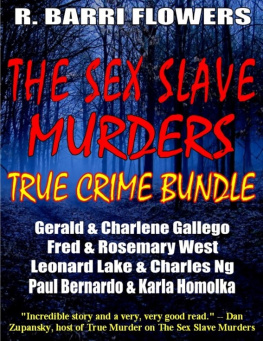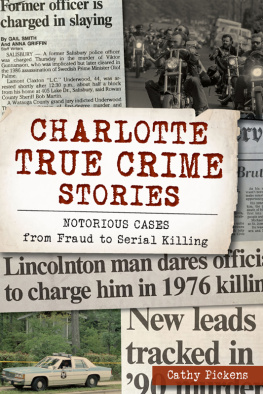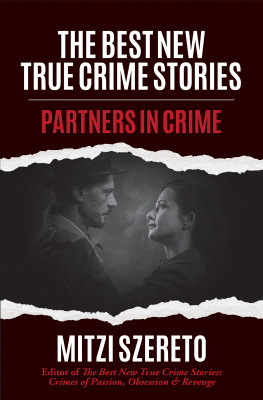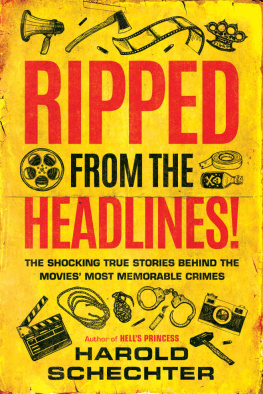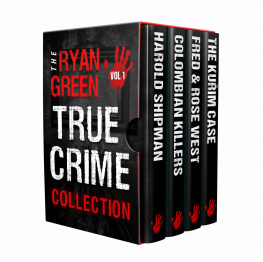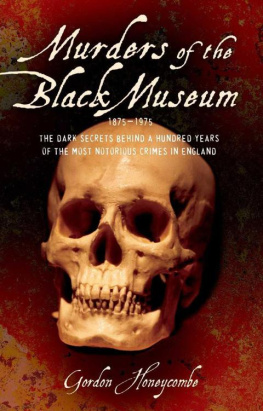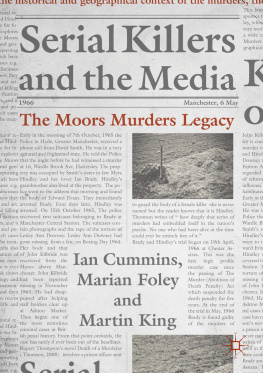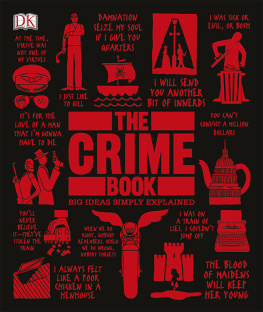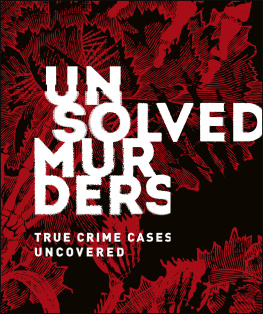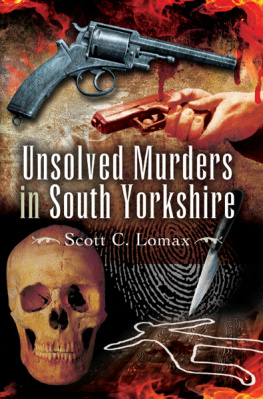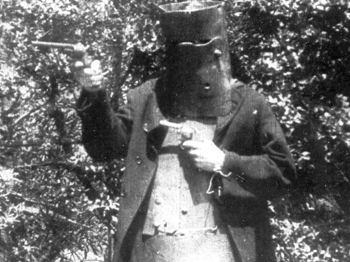Publishing information
The first edition published September 2009 by
Rough Guides Ltd. 80 Strand, London, WC2R 0RL
Email: mail@roughguides.com
Distributed by the Penguin Group:
Penguin Books Ltd. 80 Strand, London, WC2R 0RL
The publishers and authors have done their best to ensure the accuracy and currency of all information in The Rough Guide to True Crime; however, they can accept no responsibility for any loss or inconvenience sustained by any reader as a result of its information or advice.
No part of this guide may be reproduced in any form without permission from the publisher except for the quotation of brief passages in reviews.
Cathy Scott, 2009
ISBN 13: 978-1-85828-385-2
This Digital Edition published 2011. ISBN: 9781405381390
E-Book format prepared by DK Digital, London and DK Digital Media, Delhi.
Preface
A journalists assignments often lead her career. Covering military news stories has taken me to the war-torn country of Somalia, to the Middle East and to Panama. And a concern for animal welfare took me to the storm-ravaged US Gulf Coast, where I spent four months investigating the fates of pets left behind in hurricane-ravaged New Orleans, Louisiana.
But it is the footprints left behind by criminals that fascinate me the most. For me, true crime is a passion looking behind the story and picking up on the clues that lead to the perpetrators. Im interested in getting to the facts of a case, no matter how emotive the circumstances of that case might be.
Ive been to more crime scenes and far too many homicides than I care to count. Even so, it is the details the demeanour of witnesses, of family, neighbours and police, and even the weather that hold your attention. As a writer, I am something more than a bystander, but I have the bystanders vantage point: I step back and observe as the tales unfold before me.
The illegal deeds described within this guide are often gritty but always fascinating, whether they are the facts of an infamous gem heist in Milan, Italy, in which thieves tunnelled into a top-end jewellery store, or the murder of an unsuspecting Oklahoma grandmother, Bertha Pippin, who was caught off-guard early one morning when there was a knock at her door. I have always gravitated towards the underdog when covering crime, attempting to give a voice to the victims.
In the latter case, I wondered why it was all but ignored by the media after the initial reports, despite its shocking nature. In the case of the murder of Susan Berman an unsolved crime that took place in Beverly Hills in 2000 nobody, after a flurry of early articles, appeared to be covering the story with much depth. All the more surprising, when you consider that Berman was the daughter of a mobster.
Some true cases are just plain absurd. A Las Vegas police detective once told me that reason crooks are caught is simple: they are stupid. Some leave their own belongings behind: it has been known for burglars to even leave photo ID, such as driving licenses, at the crime scene. It doesnt get better than that for investigators not to mention writers.
The stories within these pages include the good, the bad, the ugly, and sometimes the comical. The devil is in the details, and I hope I have achieved my goal, of bringing both the victims and the culprits to life for you, the reader.
Cathy Scott, 2009
I am grateful to Jim Cypher, my agent at the time, for leading me to this project; Susan Lee Cohen with Riverside Literary Agency for taking me under her wing; Sean Mahoney with Penguin Books for his faith in my abilities; and Rough Guides editors Andrew Lockett and Matthew Milton, from across the pond, for their careful and thoughtful massaging of the manuscript.
I salute my colleagues in the press, whose well-researched background articles helped point me in the right direction. And, as always, many thanks to my family for believing in me, especially my twin sister Cordelia Mendoza and her husband Bob; my big brother Dr J. Michael Scott and his wife Sharon; my son Raymond Somers Jr and daughter-in-law Karen; and my grand kids Claire and Jake. I dont know what Id do without them. Also, many thanks go to my late mother, Eileen Rose Busby, a fellow author who loved a great mystery and kept our family book shelves well stocked.
Outlaws: The Money, or your Life
The criminals and crimes of the early modern age have been romanticized, stylized and celebrated time and again in print and on screen. In the first few decades of the twentieth century and in the Depression era of the 1930s in particular outlaws often became heroes of sorts.
The procession of high-profile public enemies began with John Dillinger the most famous of all US bank robbers and it included such notorious criminals as Bonnie and Clyde, Ma Barker, Machine Gun Kelly, Pretty Boy Floyd, and Baby Face Nelson. They were the first celebrity gangsters and their crimes were always front-page news during what became known as the Midwest Crime Wave or Public Enemy era.
It is still hard to tell how much of their reported exploits was hard fact and how much popular myth. Such is certainly the case with Ma Barker and her boys, whose misdemeanours have been dramatized over the years in books and in films particularly with regard to the degree to which Barker was herself a criminal.
Not all the outlaw tales, however, were exaggerated. Bonnie and Clyde, the most famous outlaw couple of all time, may have been glamourized even more in the years since their deaths, but they were larger-than-life legends even when they were alive. Its a phenomenon for which the FBI itself was partially responsible: being placed on the most wanted list pumped up the crooks status, making the criminals reputations even more notorious. However, from John Dillinger and his gang to Ma Barker and her boys, the reality of their lives and the circumstances they lived under as they committed their crime sprees were anything but glamorous. Many of these criminals were on the lam for years, hiding out wherever they could, and terrorizing towns with kidnappings, robberies, and murders often mowing down anyone who tried to get in their way. Because they had to keep low profiles, they lived rough, bedded down where they could and frequently didnt know when theyd eat their next meal.
Theres an irony to this of course, as many of US Depression-era gangsters, such as Pretty Boy Floyd and Machine Gun Kelly were down on their luck and turned to a life of crime because, during the economic slump, there was simply no work to be found. Many were poor country boys and girls yearning for a new way of life and willing to do anything to get it, for whom shiny new cars and powerful sub-machine-guns were equally covetable tokens of success. Most died violent deaths.
Outlaws and their Nicknames
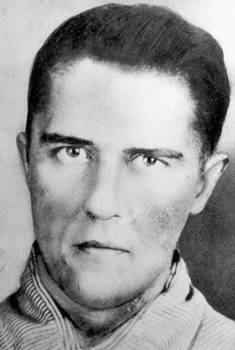
Alvin Karpis: creepy enough for you?
To accompany their notorious reputations, outlaws often had outrageous names bestowed upon them. Some of the names didnt exactly fit their tough-guy personas, as with Charles Pretty Boy Floyd and Lester Baby Face Nelson Gillis. Some, however, were entirely appropriate, as evidenced by the rather unimaginative but apposite monikers for George Machine Gun Kelly and Alvin Creepy Karpis (whose eventual 26-year incarceration at The Rock Alcatraz was the longest sentence the prison had ever known).

